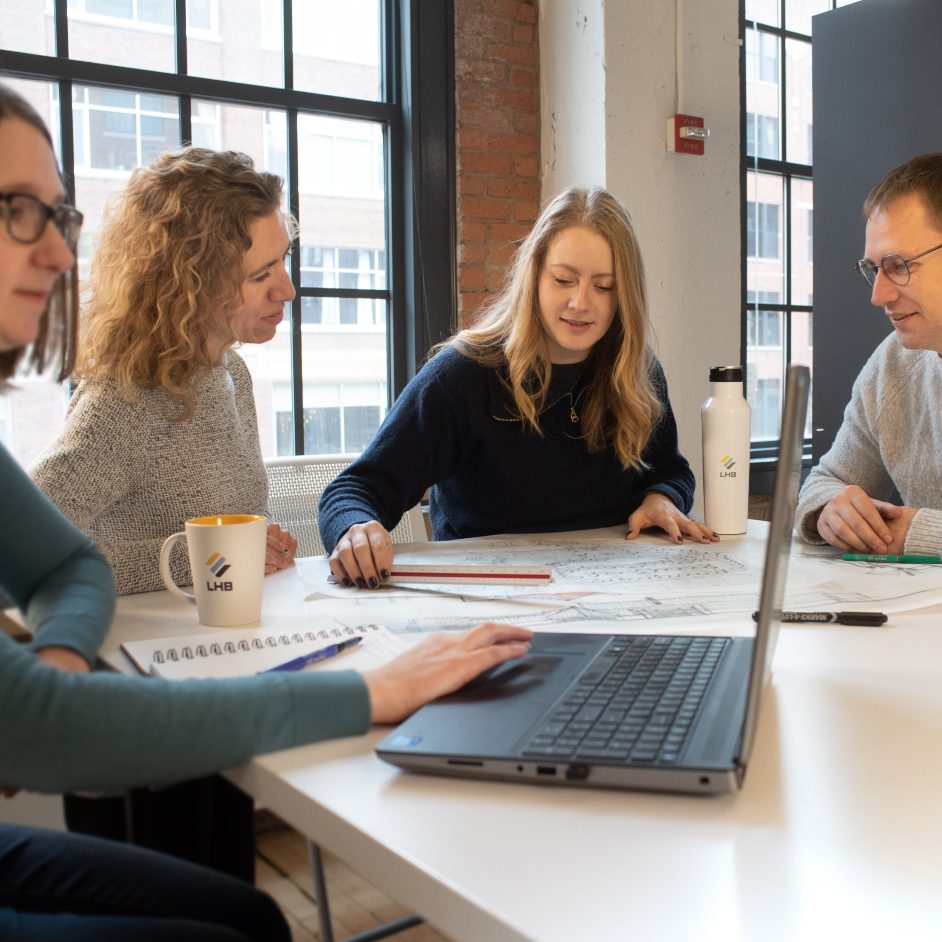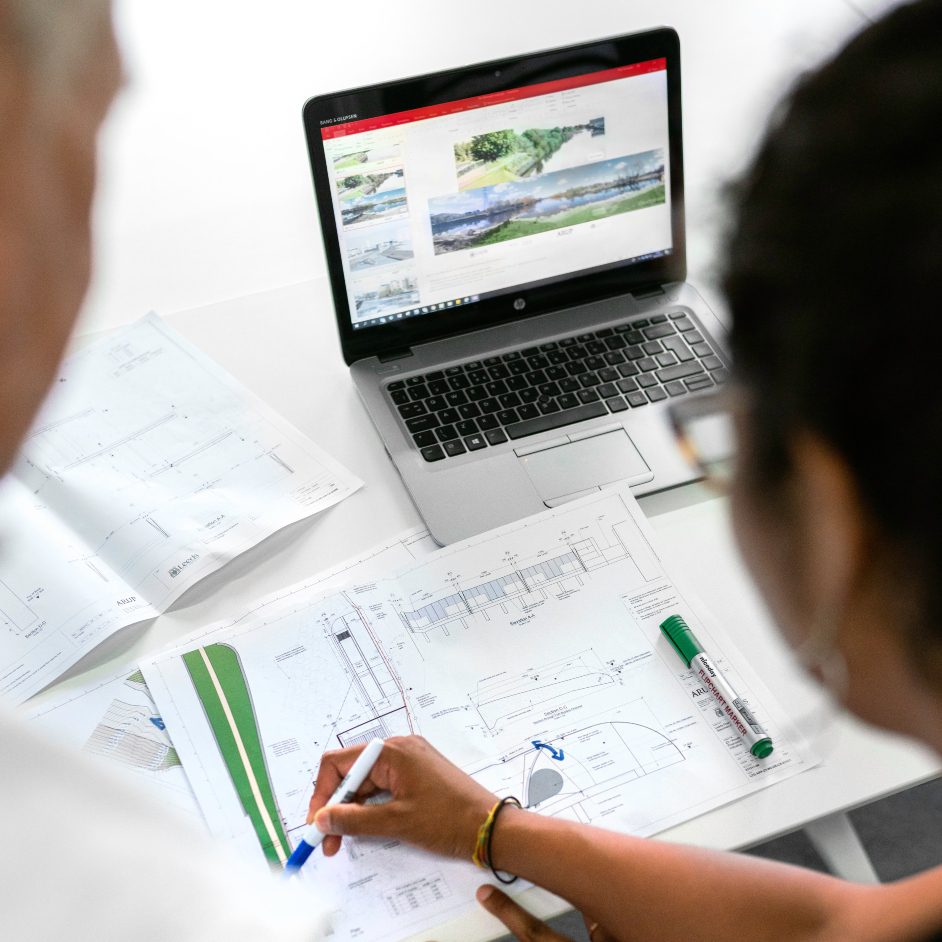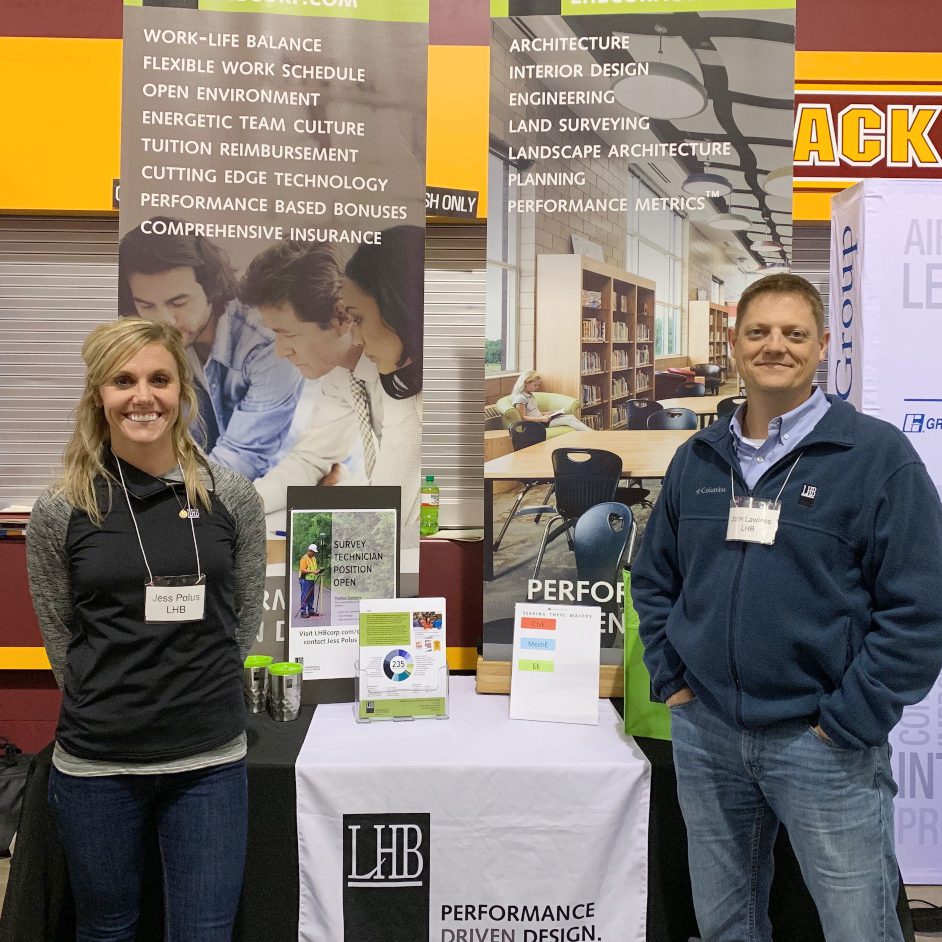
Less than 25 percent of all U.S. architects are women. In engineering, women account for just 9 percent of practitioners.
Studies show that many women leave the AE industry well before retirement, and girls are often discouraged from pursuing careers in STEM fields. Gender discrimination and bias — in boardrooms, breakrooms, and classrooms — take a toll.
In 2015, LHB’s leadership and staff began discussing how gender issues impact our workplace and our industry. This frank conversation (initially focused on unconscious bias and interruptions) quickly led to a larger question: How could we make gender equity efforts part of our daily work?
Creating opportunities
Removing gender discrimination and bias from the workplace is not only a good thing to do, of course, it also makes business sense. Promoting gender equity allows employers to:
- Attract and retain talented staff
- Create an environment where everyone can do their best work (rather than wasting time navigating bias, discrimination, and harassment)
- Better understand the viewpoints of the communities they serve, strengthening connections, and enhancing collaborations
- Help clients meet the current and future needs of their staff and customers
For all these reasons and more, we committed ourselves to advancing gender equity. And we knew it would take more than a training or two. This journey would require time, resources, and discipline.
To guide us, we hired Dr. Heather Hackman, a consultant with both academic training and a passion for bringing about equitable and empowering change in organizations. In 2021, she began working with our leadership team, shedding light on how structural forces shape our perceptions of gender.
Dr. Hackman encouraged us to consider how our business and even our profession could make the world a more equitable place. From community contributions to career development, how could LHB level the playing field? What questions did we need to ask ourselves and our clients (about restrooms, ergonomics, and more) to ensure that our designs benefit all genders?
Reflection and revision
Roughly half of our staff has already participated in a series of conversations led by Dr. Hackman and the remaining LHB staff will be introduced to gender equity training in the coming year.
Gender equity isn’t the only issue we need to address at LHB and our industry — racial equity and treatment of people with disabilities also require our attention — but we believe addressing gender equity will give us the language and tools to address not only gender inequity, but also other forms of bias, discrimination, and stereotyping that prevent people from being their best selves at work and elsewhere. Here’s something fascinating: Learning to recognize gender inequity — and the damage it does — inevitably leads to a broader perspective shift. You suddenly see the injustice done to lots of underrepresented groups.
Recently, our staff has begun to apply the lessons learned about gender equity — reevaluating the way we post jobs internally, the scholarships we fund, and the images we use in proposals and brochures. A half-dozen committees have embarked on the next leg of our journey, using our recent education to identify and remove gender-related barriers embedded in our company’s business practices and culture.
Discussing gender equity at LHB hasn’t necessarily been easy. We don’t always agree; our priorities often differ. For some, the pace of change is plodding. For others, it’s far too fast.
As experienced designers, however, we know firsthand that experimentation can result in astonishing results. So we’re starting to rethink, redraw, and correct the blueprints for gender at LHB. It’s hard work, but worth it — no matter how challenging.

